 This month is also 20th anniversary of the passage of the Trafficking Victims Protection Act of 2000 (TVPA), which made human trafficking a federal crime. There are many efforts to reduce the prevalence of trafficking and protect the survivors, but there is still a large gap in understanding of what human trafficking entails.
This month is also 20th anniversary of the passage of the Trafficking Victims Protection Act of 2000 (TVPA), which made human trafficking a federal crime. There are many efforts to reduce the prevalence of trafficking and protect the survivors, but there is still a large gap in understanding of what human trafficking entails.
One large misconception regarding trafficking is that the most prevalent kind is sex trafficking. The reality is that experts believe, worldwide, there are more incidents of forced labor trafficking. Both are harmful and impact tens of thousands in the US every year. Runaway and homeless youth are particularly vulnerable to trafficking, with several studies finding that a large percentage of trafficked women in urban areas had run away from home prior to becoming involved.
A Phoenix-based organization, Tumbleweed Center for Youth Development, in collaboration with the Federal Youth Services Bureau, conducted a study with startling results. Of 215 homeless youth surveyed, 35.8% reported a history of sex trafficking. LGBTQ youth reported a higher incidence of trafficking experiences (45%) compared to cisgender heterosexual youth (28%). Data on labor trafficking is harder to find for a number of reasons, but at a local level, a recent study from Georgia State University found that youth experiencing homelessness were more often experiencing labor trafficking than sex trafficking
Runaway and homeless youth are particularly vulnerable for a number of complex reasons. They may be isolated from family and friends, or may be reluctant to seek help from law enforcement. In 2019, human trafficking was the fifth top reason that youth called in to NRS to request a Home Free ticket. Unfortunately, a major barrier in identifying survivors of trafficking is that they often fail to self-identify their situations. They may reach out without knowing the correct language for what they’re experiencing. Service providers often have specific questions to help identify those being trafficked, but it will always be a challenge.
Not all trafficking survivors fit the traditional image. Not all are physically abused. Many may have been trafficked by their families or romantic partner. Many are immigrants, legal or otherwise. Their abuser may control their finances and personal identification documents, or promised them a better life. Trafficking is a very complex issue with many facets and it is important to remember that there is not a one-size fits all model for trafficking.
There are, however, resources available for victims of human trafficking seeking help. If you or someone you know is in crisis and experiencing trafficking, you can call our partners at the Human Trafficking Hotline at 1-888-373-7888 or chat on their website humantraffickinghotline.org.
The National Runaway Safeline is also here to support youth survivors and their families on our 1-800-786-2929 hotline and online services (live chat, e-mail, forum) with free, confidential, non-judgmental support.




